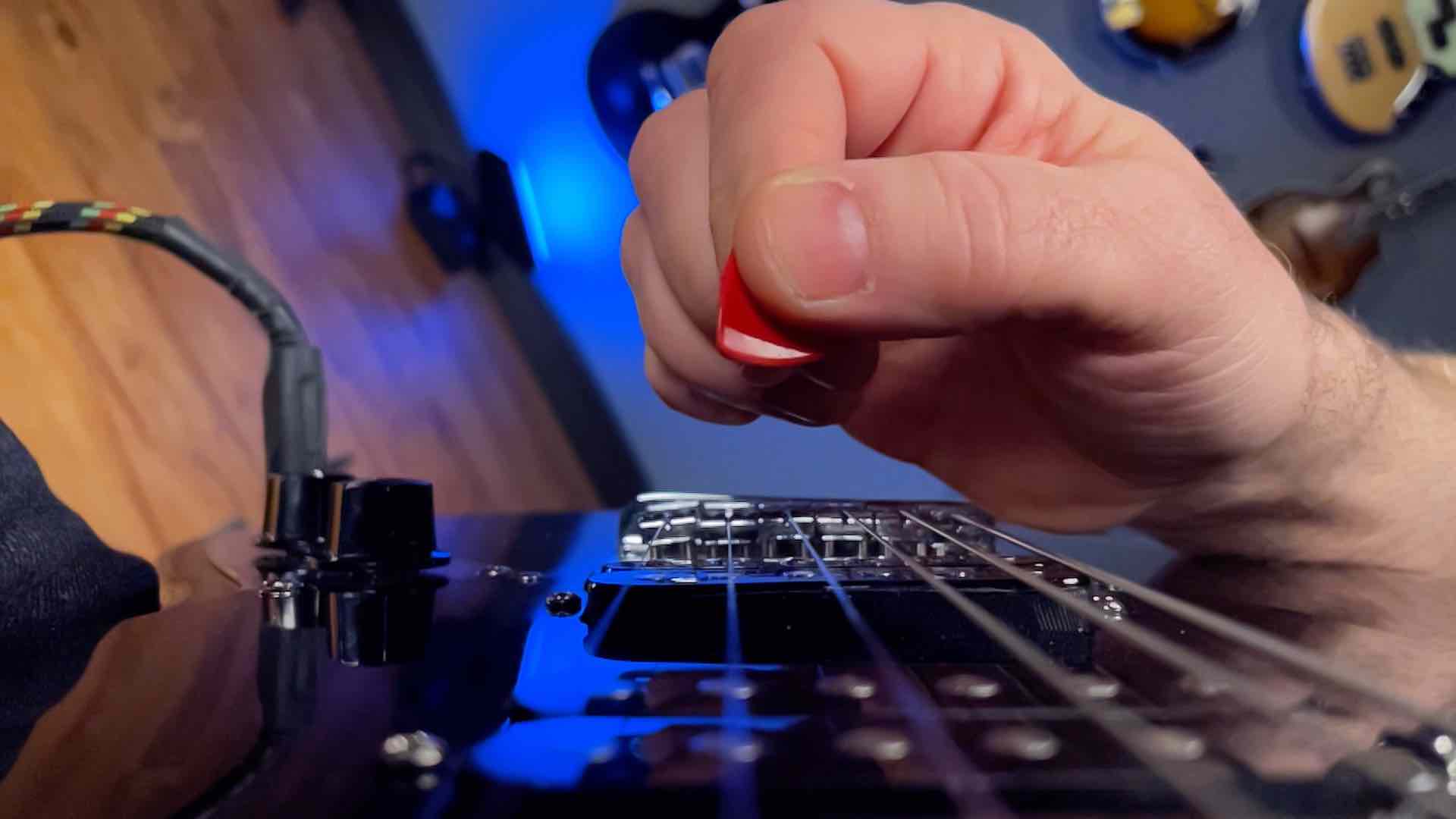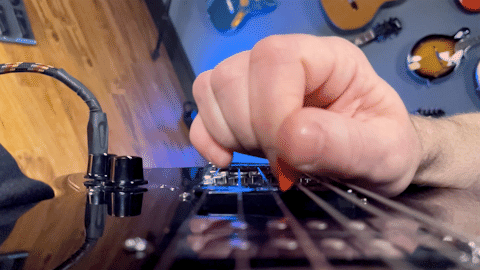
One of the biggest obstacles to achieving efficient picking motion is not even the motion itself: it’s the pick attack.
When we evaluate players who are still working on their core technique, we begin by setting the pick aside and just testing the joints. This is when we often discover that the motions themselves work fine, and it’s only the inability to connect to the string that causes problems. If the attack feels weird or awkward, it can be difficult or impossible to generate the motion. So the player just assumes the whole technique isn’t right for them, and gives up on it.
Stuck in the Garage
The most common cause of picking motion unsmoothery (that’s a technical term) is one of the most ubiquitous problems in picking technique: the dreaded “Garage Spikes” problem.
Just like the spikes in a parking garage, with a garge spikes problem, one of the pickstrokes — either the downstroke or the upstroke — is more aggressive, with too much attack, and the opposite pickstroke is too smooth, with little to no attack at all. We can see this mismatch clearly in Magnet footage, where the string displaces more in one direction than the other.
The roots of the garage spikes phenomenon are deceptively complicated. For the smoothest attack, we want the pick to hit the symmetrically in both directions. On the surface, this seems like a fairly intuitive observation. The trick is that this symmetry must apply relative to the plane in which the pick is moving. Not all picking motions move strictly side to side, so your entire form must account for this, not just your pick grip.
Any mismatch between the pick’s attack and its motion will lead to garage spikes. And this can cause a whole host of secondary issues, from the super-common complaint of the pick moving around in your grip, to a total inability to use a particular type of joint motion if the mismatch is significant enough.
Smoothing The Spike
The fix is to alter the form so the attack is symmetrical. This balances the forces, smoothing out the sound and feel of the alternate picking motion. It also centers the pick at the null point between these forces, maintaining its position in your hand with the least possible muscular effort.
The exact method for doing this depends on the picking technique you’re using. For example, a player with a classic Gypsy-style flexed wrist orientation like the amazing Joscho Stephan will use a positive pick point:
In combination with Joscho’s flexed-wrist form, this type of grip is not just acceptable — it’s necessary. But for a rock player with a straighter wrist who rests on the bridge, the same grip orientation would cause pronounced garage spiking on downstrokes. And even wrist players will use different approaches depending upon the type of anchor they use and the type of escape motion they’re making. It’s complicated!
Primed For Smooth Attack
In our latest update to the Pickslanting Primer, we step through the four most common considerations that wrist players need to check when using naturally efficient “reverse dart thrower” wrist motion:
- forearm position
- edge picking
- pick point
- joint motion path
When all four of these form considerations are matched, the attack forces will be balanced, and the picking motion starts working much more smoothly and effortlessly.
Check out the latest wrist motion updates here!

